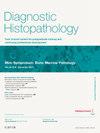空气污染的肺部病理:综述
引用次数: 0
摘要
暴露于环境和室内空气污染会导致生命各个阶段的呼吸系统疾病,并在全球每年造成670万人过早死亡。已知的主要贡献污染物是PM、SO2、O3、NO2和CO。已发表的大量证据描述了它们的各种病理作用。世界卫生组织报告称,地球上99%的人口呼吸的空气污染水平超出了全球空气质量准则。缺乏清洁燃料是一个主要的风险因素,特别是在低收入和中等收入国家。污染对呼吸系统的影响是广泛的,从宫内生活到老年,在极端年龄时风险最大。许多污染物通过同样的机制损害气道;诱导氧化应激并产生活性氧和氮种,导致慢性气道改变。与环境污染相关的病理包括但不限于肺发育缺陷、哮喘和慢性阻塞性肺病、传染病和呼吸道恶性肿瘤。虽然暴露于污染对心血管的影响已经得到了很好的描述,但这篇综述文章的目的是概述与呼吸系统疾病相关的主要环境空气污染物类型,并描述与其暴露相关的肺部病理。本文章由计算机程序翻译,如有差异,请以英文原文为准。
The pulmonary pathology of air pollution: a review
Exposure to ambient and household air pollution causes respiratory disease at all stages of life and is globally responsible for 6.7 million premature deaths annually. The major known contributory pollutants are PM, SO2, O3, NO2 and CO. Extensive evidence has been published describing their various pathological effects. The WHO report that 99% of the earth's population breathe air with pollution levels outside the global air quality guidelines. Lack of access to clean fuel is a major risk factor, particularly in low- and middle-income countries. The effects of pollution on the respiratory system are broad, identified from intrauterine life to old age, with most risk at the extremes of age. Many pollutants damage the airways by the same mechanism; the induction of oxidative stress and production of reactive oxygen and nitrogen species, leading to chronic airway changes. Pathologies related to environmental pollution include, but are not limited to, defects in lung development, asthma and COPD, infectious disease and respiratory tract malignancies. While the cardiovascular effects of exposure to pollution have been well described, the purpose of this review article is to outline the major ambient air pollutant types associated with respiratory disease, and describe the pulmonary pathology associated with their exposure.
求助全文
通过发布文献求助,成功后即可免费获取论文全文。
去求助
来源期刊

Diagnostic Histopathology
Medicine-Pathology and Forensic Medicine
CiteScore
1.30
自引率
0.00%
发文量
64
期刊介绍:
This monthly review journal aims to provide the practising diagnostic pathologist and trainee pathologist with up-to-date reviews on histopathology and cytology and related technical advances. Each issue contains invited articles on a variety of topics from experts in the field and includes a mini-symposium exploring one subject in greater depth. Articles consist of system-based, disease-based reviews and advances in technology. They update the readers on day-to-day diagnostic work and keep them informed of important new developments. An additional feature is the short section devoted to hypotheses; these have been refereed. There is also a correspondence section.
 求助内容:
求助内容: 应助结果提醒方式:
应助结果提醒方式:


